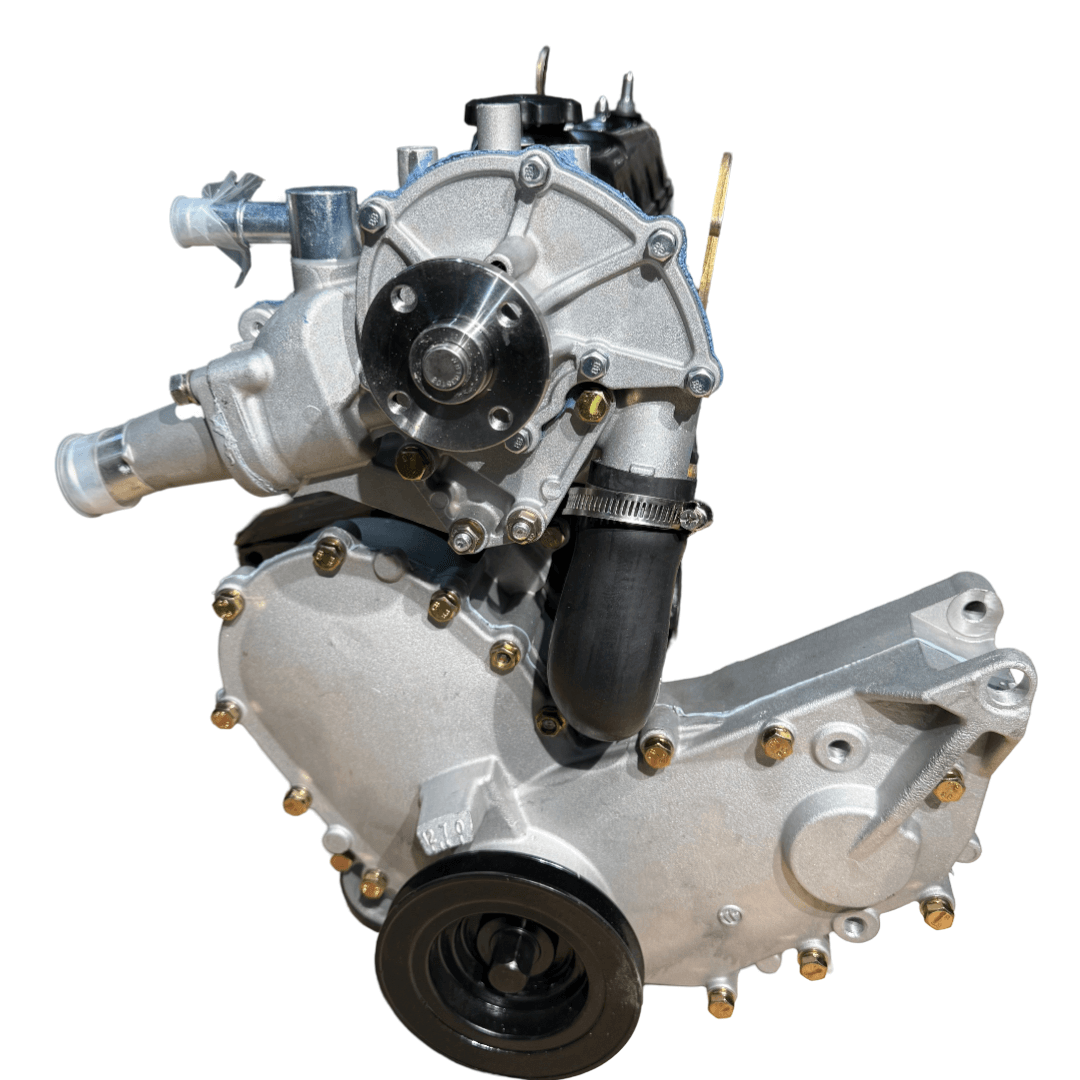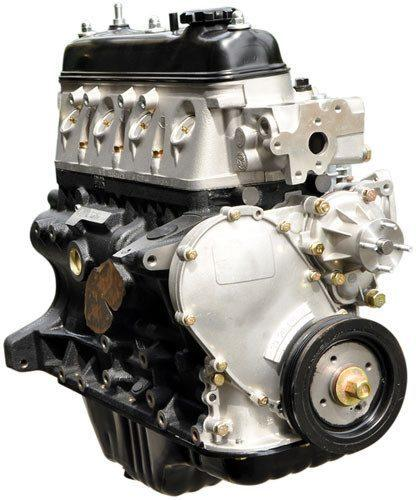How to Troubleshoot Common Issues with the 4Y Engine
How to Troubleshoot Common Issues with the 4Y Engine
Blog Article
Exploring the Numerous Kinds Of Engine: Which One Fits Your Needs?
In the mission to establish one of the most suitable engine type for your specific requirements, it is vital to review the distinctive characteristics and benefits of each option available. Internal combustion engines remain to control as a result of their integrity, while electrical engines are gaining grip for their sustainability. Crossbreed engines use a functional concession, and diesel motor attract attention for their power in requiring applications. In addition, different gas engines present ingenious services, albeit with certain limitations. Understanding your top priorities will certainly be critical in this decision-making process, resulting in an exploration of factors that might affect your option.

Internal Burning Engines
Interior combustion engines (ICEs) are the foundation of contemporary transportation, powering a vast selection of automobiles from automobiles to planes. These engines operate the concept of transforming fuel right into power through a collection of regulated explosions within a burning chamber. One of the most typical sorts of ICEs consist of fuel engines, diesel engines, and rotating engines, each made to fulfill details efficiency and effectiveness demands.
Fuel engines commonly make use of stimulate ignition, while diesel engines rely on compression ignition, causing distinct distinctions in fuel effectiveness and power result (4y engine). Rotary engines, or Wankel engines, supply a compact design and smooth operation, yet are less typically used in mainstream applications
ICEs have gone through considerable improvements in innovation, consisting of the intro of turbocharging and fuel injection systems, which improve general effectiveness and performance. In spite of their efficiency enhancements, ICEs deal with enhancing examination due to their environmental effect, particularly concerning greenhouse gas emissions.
Electric Engines
As issues about ecological sustainability and nonrenewable fuel source dependence expand, electric engines have become an engaging choice to inner combustion engines. These engines use electric motors powered by batteries or gas cells, supplying a cleaner and a lot more effective motive powers.
One of the primary benefits of electrical engines is their decreased emissions. Unlike typical engines that melt nonrenewable fuel sources, electric engines produce zero tailpipe exhausts, significantly lowering air pollution and adding to boosted public wellness. In addition, the effectiveness of electric motors frequently surpasses that of internal burning engines, converting a higher percentage of energy from the power source right into functional energy for activity.
Electric engines are additionally noteworthy for their quiet procedure, making them optimal for urban atmospheres. 4y engine. The simplicity of their style results in less moving components, which can lead to minimized maintenance expenses and increased dependability over time
However, difficulties continue to be, including battery manufacturing influences, charging framework, and range restrictions. Despite these obstacles, the expanding investment in electric lorry innovation and eco-friendly energy sources factors towards an appealing future for electrical engines, placed to play a vital role in the transition towards lasting transportation.
Hybrid Engines
Blending the benefits of both electrical and traditional inner combustion engines, hybrid engines represent a flexible remedy in the pursuit for efficient and sustainable transportation. These engines incorporate a fuel or diesel motor with an electric motor, allowing for enhanced gas performance and lowered emissions compared to conventional automobiles.
Crossbreed engines run in numerous settings, making use of the electric motor for low-speed driving and the internal combustion engine for higher speeds or when more power is needed. This dynamic operation not only enhances fuel economic climate however likewise adds to a smoother driving experience. Regenerative stopping is an additional essential feature, capturing energy usually lost during braking and redirecting it to recharge the battery.

As customers progressively prioritize eco-friendliness, crossbreed engines stick out as a useful choice, supplying an efficient balance of efficiency, effectiveness, and environmental duty. This versatility makes them suitable for city commuting and long-distance traveling alike.
Diesel Motor
Efficiency and power are characteristics of visit this site right here diesel engines, which have actually long been favored for their robustness and gas economy. These engines operate the principle of compression ignition, where air is pressed to a high temperature prior to fuel is infused, igniting it without the demand for spark plugs. This procedure enables diesel motor to achieve greater thermal efficiency compared to fuel engines, equating right into better gas gas mileage and lower co2 emissions.
Diesel motor are specifically well-suited for durable applications such as vehicles, buses, and commercial machinery, where torque and toughness are paramount. Their style normally consists of stronger elements to stand up to the greater stress generated during operation, leading to longer life span and lowered upkeep costs.

Different Gas Engines
While diesel motor have long dominated the landscape of sturdy source of power, alternative gas engines are getting traction as viable options for an extra lasting future. These engines utilize a variety of gas, such as compressed natural gas (CNG), ethanol, hydrogen, and lp, aiming to reduce greenhouse gas exhausts and dependence on fossil fuels.
One significant benefit of alternate gas engines is their prospective to lower carbon impacts. For example, CNG engines produce less contaminants compared to typical diesel engines, making them suitable for metropolitan transit systems and fleets looking for to enhance air top quality. Ethanol, obtained from biomass, not just decreases exhausts however additionally supports farming economies.
Hydrogen gas cells stand for an innovative growth in this realm, using zero-emission address power through a chain reaction in between hydrogen and oxygen. Difficulties such as framework growth and production expenses continue to be barriers to widespread adoption.
Final Thought
In verdict, selecting the suitable engine kind demands careful consideration of particular requirements and choices. Inner combustion engines provide dependability, while electrical engines focus on sustainability and lowered upkeep. Hybrid engines combine the advantages of both, improving effectiveness, whereas diesel motor supply premium power and torque for heavy-duty applications. Alternative fuel engines present green alternatives, albeit with possible facilities difficulties. Eventually, an extensive analysis of driving habits and ecological values will assist in a notified choice relating to engine choice.
Hybrid engines provide a versatile concession, and diesel engines stand out for their power in requiring applications. The most typical types of ICEs consist of fuel engines, diesel engines, and rotary engines, each developed to meet specific efficiency and efficiency requirements.
Unlike conventional engines that burn fossil gas, electrical engines produce zero tailpipe exhausts, dramatically reducing air pollution and adding to enhanced public health.Crossbreed engines operate in numerous modes, utilizing the electrical motor for low-speed driving and the internal burning engine for higher rates or when more power is required. Crossbreed engines combine the benefits of both, enhancing performance, whereas diesel engines offer superior power and torque for sturdy applications.
Report this page